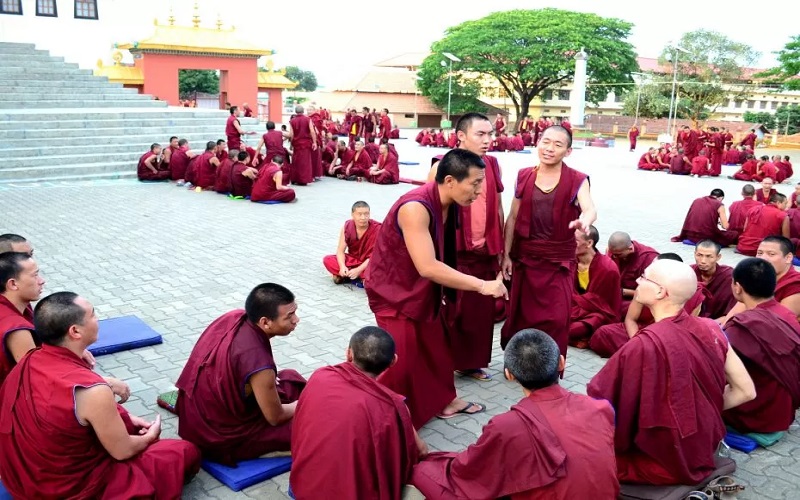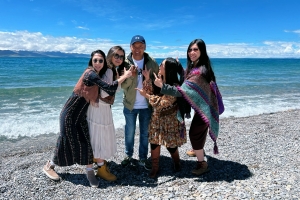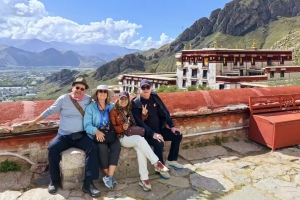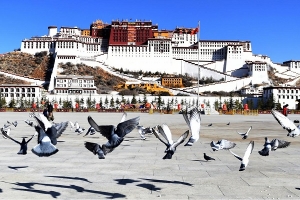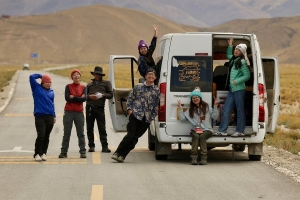Traveling in Tibet offers more than breathtaking landscapes and ancient ruins – it provides a unique opportunity to immerse yourself in a living cultural and spiritual heritage. Tibetan monasteries are not only architectural marvels but centers of vibrant religious practice and deep-rooted traditions. However, when visiting these sacred spaces, it is crucial to adhere to local customs and avoid behaviors that can be perceived as disrespectful. This article outlines ten essential taboos that every visitor should be aware of, ensuring that your journey through Tibet is both enriching and respectful.
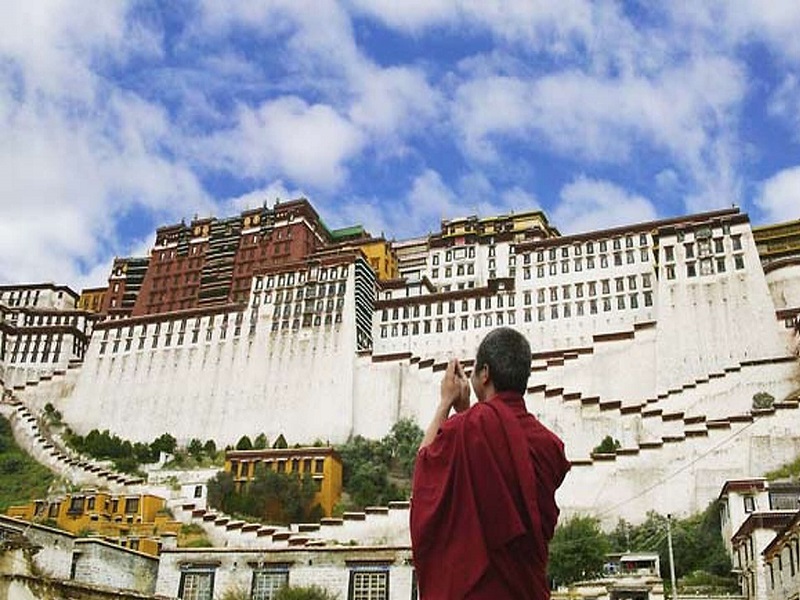
1. Honor the Entrance Restrictions and Dietary Customs
Before you step through the ornate gateways of a Tibetan monastery, always verify that the entrance area is open to the public. Many sacred halls and sections may be reserved solely for monastic use or special ceremonies. In addition, Tibetan Buddhist practices hold certain culinary restrictions. It is recommended that visitors abstain from eating garlic or similarly pungent foods prior to their visit, as these can be seen as disruptive to the tranquil and sacred environment. Furthermore, smoking is generally prohibited on the premises. These protocols are in place to preserve the sanctity and purity of the spaces where meditation and rituals take place.
Key Tips:
- Confirm the public access hours of the monastery upon arrival.
- Avoid consuming garlic or strong-flavored foods and steer clear of smoking before entering.
- Respect any posted guidelines at the entrance.
This initial step of self-preparation reflects your commitment to respecting the religious environment and adheres to an integral aspect of Tibetan etiquette that has been passed down through generations.
2. Navigate Sacred Stone Arrangements with Mindfulness
Tibetan landscapes are replete with symbolic stone installations, from piles of Mani stones to stones inscribed with sacred texts and statues of Buddhist deities. The direction you choose to walk around these artifacts can convey deep symbolic meaning. When you encounter a cluster of Mani stones, it is advised to travel in a clockwise direction. Conversely, when you are at a bon (the indigenous pre-Buddhist religion) monastery, the respectful path is in the anti-clockwise direction.
Why It Matters:
In Tibetan culture, the act of moving in a prescribed direction aligns your journey with cosmic rhythms and traditional practices. This mindful movement is not merely a physical act; it is a spiritual gesture that embodies respect for the land’s ancient beliefs.
Practical Advice:
- Observe the flow of local visitors who often demonstrate the correct directional movement.
- If unsure about the proper course, ask a local guide or monastery staff for assistance.
3. Exercise Caution Around Sacred Objects
Within the serene corridors of a Tibetan monastery, sacred objects abound. These include Buddha statues, thangkas (religious paintings), scriptures, bells, and intricate murals. It is essential to treat these items with care and reverence. Avoid touching or handling these sacred objects unless explicitly permitted by the monastic caretakers. Similarly, refrain from engaging in activities such as turning over or handling scriptures casually. Likewise, avoid ringing bells without proper approval.
Understanding the Significance:
Touching these artifacts can be seen as a breach of sanctity. In Tibetan Buddhism, each object plays a role in the spiritual ambiance of the space and is often imbued with layers of symbolism and reverence that demand a gentle, respectful approach.
Recommendations:
- Always ask for guidance if you wish to observe these artifacts up close.
- Remember that your actions, even those that might appear minor, have spiritual and cultural implications for the residents and visitors of the monastery.
4. Refrain from Any Harmful Acts in the Presence of Monastics
A fundamental tenet of Buddhist practice is the commitment to non-violence and the preservation of life. Given this, any act that causes harm to living beings, even inadvertent, should be avoided when you are in the presence of monks and nuns. Witnessing a violent act or a disregard for life can not only disrupt the peaceful ambiance but also deeply offend the sensibilities of the practitioners who live by these values every day.
Cultural Insight:
Monks and nuns spend their lives cultivating compassion and non-violence. Acts that contradict this core belief can be seen as provocations or signs of disrespect toward the spiritual path.
Travel Tip:
- Maintain awareness of your surroundings to ensure that your behavior never inadvertently causes distress or harm in these sacred settings.
- If you witness or are tempted to engage in any aggressive actions, remember that the overarching principle of Tibetan Buddhism is to foster compassion and peace.
5. Observe Proper Seating Etiquette and Wardrobe Choices
In the communal tranquility of Tibetan monasteries, seating arrangements hold cultural significance. Although sitting cross-legged is a common practice, visitors should remain mindful of the seating designated for specific purposes. Never sit on seats that are reserved for revered living Buddhas, high-ranking monks, or on special platforms meant for ceremonial rites. Additionally, wardrobe choices are not to be taken lightly. Wearing short skirts or overly casual attire in such solemn settings might be interpreted as a lack of respect towards the cultural and religious sensibilities of the place.
Why Proper Etiquette is Important:
Appropriate dressing and respectful seating not only prevent physical discomfort for those around you but also symbolize your acknowledgment and acceptance of the local traditions. Monasteries in Tibet are spaces where spirituality and etiquette coexist intricately.
Practical Guidelines:
- Choose modest clothing when planning your visit.
- Look for any posted instructions regarding seating and follow them religiously.
- If in doubt, opt for traditional or conservative attire to further convey respect.
6. Mind Your Gestures Around Sacred Symbols
In Tibetan monasteries, non-verbal communication—especially gestures—carry profound meaning. When standing near Buddha statues, sacred scriptures, thangkas, or traditional murals, avoid any gesture that might be perceived as dismissive or disrespectful. For instance, pointing your finger at any of these revered symbols can be offensive. Instead, adopt the local custom of placing your hands together in front of your chest as a sign of respect. This gesture, common among Tibetan practitioners, is a humble acknowledgment of the sanctity of the objects and the teachings they represent.
Cultural Reflection:
Gestures of respect are deeply ingrained in Tibetan culture. By emulating these practices, visitors can express their understanding and respect for local customs, fostering a positive connection with the community.
How to Implement:
- Observe how local visitors or monastics perform respectful gestures.
- If uncertain, inquire with a local guide to learn the appropriate forms of non-verbal communication.
- Always approach sacred symbols with humility and thoughtful consideration.
7. Handle Written Materials and Sacred Fabrics with Care
Tibetan monasteries are replete with items that carry the written word—be it ancient scriptures, prayer flags, or ceremonial fabrics. These items are treated with reverence, and any improper handling can be seen as disrespectful. Avoid using any paper or fabric inscribed with sacred texts to wipe away sweat or clean your hands. This rule extends to prayer flags, which should be treated with honor and properly displayed only following appropriate rituals.
Extended Insight:
The written word in Tibetan Buddhism is believed to hold spiritual power. Mishandling these materials could be interpreted as a disregard for that divine power. Understanding the respectful treatment of these items is crucial for any visitor who wishes to immerse themselves in the monastic way of life.
Best Practices:
- Refrain from using sacred materials for mundane tasks.
- If you purchase prayer flags or other religious items, make sure to follow local procedures when installing or displaying them.
- When in doubt, ask a local about the proper etiquette related to handling these artifacts.
8. Respect the Spatial Boundaries of Monastic Areas
Inside Tibetan monasteries, every area is meticulously organized with clear boundaries and designated purposes. It is important not to step over or disturb the items that belong to the monks, such as their seating arrangements, utensils, clothing, or various ritual implements. Even more, be cautious not to inadvertently cross sacred spaces that have been assigned to Buddhist statues or venerable scriptures. Each element within the monastery holds a specific role and significance, and missteps can be seen as a violation of the sacred geometry of the space.
Cultural Context:
These spatial guidelines reflect a deeper cultural understanding of order, balance, and respect for the physical space that accommodates spiritual life. Visitors who are mindful of these boundaries show their deep respect for the traditions that govern the monastery.
Helpful Hints:
- Observe the layout of the space carefully before moving around.
- Follow the lead of local visitors and attendants who are familiar with the proper paths.
- Respect any barriers or demarcated areas that indicate private or sacred zones.
9. Maintain Silence and a Calm Demeanor
Quietness is golden in the serene atmosphere of Tibetan monasteries. These sacred places are sanctuaries for meditation, prayer, and quiet contemplation. Loud conversations, disruptive behavior, or playful chases can shatter the meditative ambiance and disturb those who are engaged in spiritual practice. Observing silence or speaking in hushed tones is a sign of respect for the sanctity of the setting and for the individuals who have dedicated their lives to spiritual pursuits.
Why This Matters:
The act of maintaining quiet is not just about lowering your voice – it is about creating an environment where introspection and mindfulness can flourish. The calm energy in a monastery is an essential part of its spiritual power.
Behavioral Recommendations:
- Refrain from unnecessary chatter, especially in areas designated for prayer or meditation.
- Keep your electronic devices on silent mode to prevent any inadvertent disruptions.
- Embrace moments of silence as part of your own reflective experience while visiting.
10. Seek Permission Before Taking pictures or Take Videos in the monasteries
In an age where smartphones and digital cameras are ubiquitous, it is easy to overlook the impact of photography in sacred settings. Many Tibetan monasteries have clear guidelines regarding the use of cameras and video equipment. Some areas will have signs that explicitly prohibit photography, while others may allow it under certain conditions, often in exchange for a fee. Regardless, it is imperative to obtain permission before capturing images or videos, particularly when it involves monks, nuns, or local residents.
Cultural Considerations:
Photography in a sacred space is not merely a casual activity—it is an intrusion into a realm of deep spiritual significance. By asking for permission, you show that you value the privacy and dignity of the monks and the cultural heritage they preserve.
Practical Steps:
- Look for and adhere to any posted signage regarding photography.
- Ask local guides or monastery officials for clarification if the rules are not clear.
- When permitted, always disable the flash to preserve the subtle lighting and atmosphere of the setting.
- Respect requests from locals or monastics who might prefer not to be photographed.
When visiting Tibetan monasteries, you are not just passing through an architectural wonder; you are stepping into a living embodiment of centuries of spiritual practice and cultural evolution. These sites serve as both sanctuaries and schools for Buddhist teachings, and the rules that govern them are designed to uphold the sanctity of the spiritual environment.
By following these ten guidelines, you open yourself up to a deeper, more respectful interaction with Tibetan culture. Not only do these practices help you avoid unintentionally offending the local community, but they also allow you to gain insights into the philosophical and practical aspects of Tibetan Buddhism. Each rule is a reminder of the discipline, respect, and honor that underpin the monastic life—a lifestyle that has been honed over centuries and continues to influence countless individuals on their personal spiritual journeys.
In addition, adhering to these cultural taboos elevates your travel experience. You may find that locals are more willing to share their stories and insights with you, enhancing your understanding of Tibetan customs. This respectful approach can transform your visit into a meaningful cultural exchange, fostering goodwill and mutual understanding.

